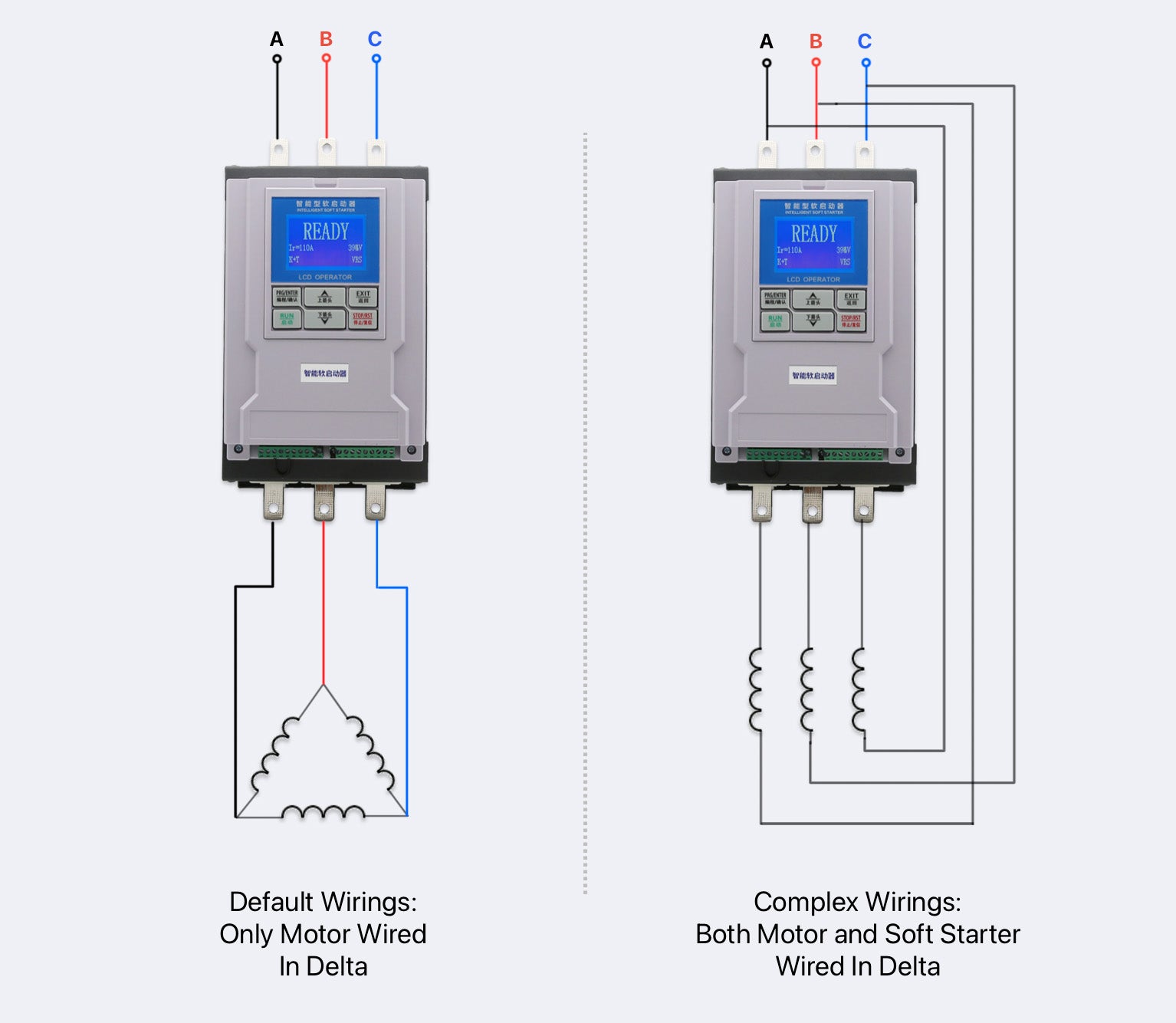How to Choose a Motor Soft Starter?
Step 1 — Match the Rated Voltage
Step 2 — Check the Rated Current
A Simple Guide for Beginners
Class 10 – Light Loads
Class 10B – Standard Industrial Loads
Class 20 – Heavy or High Inertia Loads
Class 30 – Severe Duty Loads
Recommended Motor - Soft Starter Matching Table
Soft Starter (kW)
Class 10 Motor (kW)
Class 10B Motor (kW)
Class 20 Motor (kW)
Class 30 Motor (kW)
Choosing the Soft Starter Type
Default Wiring Configurations



